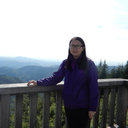Susceptible gene single nucleotide polymorphism and hemorrhage risk in patients with brain arteriovenous malformation.
Հիմնաբառեր
Վերացական
The relationship between single nucleotide polymorphism (SNP) of interleukin-17 (IL-17A), transforming growth factor β (TGF-β), as well as its receptor (TGFR-β2) and susceptibility to intracerebral hemorrhage in patients with brain arteriovenous malformation (BAVM) was investigated in the present study. A total of 53 patients with BAVM and 120 healthy controls were recruited, all of whom were Han Chinese from South China. There were no statistically significant differences in the IL-17A-197 guanine/adenine (G/A) or TGF-β1-509 cytosine/thymine (C/T) genotypes or gene frequencies between BAVM patients and controls (p>0.05), but the gene frequency of the TGFR-β2-875 A/G genotype in patients with BAVM was significantly higher (p<0.05). Furthermore, the frequencies of the G allele of IL-17A-197 G/A and TGFR-β2-875 A/G in BAVM patients with hemorrhage were higher than those without hemorrhage. TGFR-β2-875 G/G genotype is a risk factor for BAVM, and the IL-17A-197 G/A and TGFR-β2-875 A/G genotype is closely related to hemorrhage risk for patients with BAVM.




